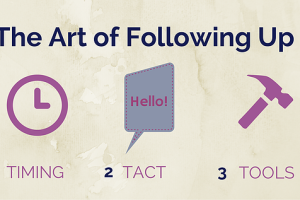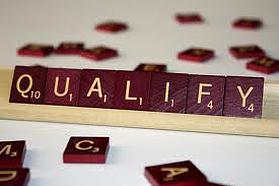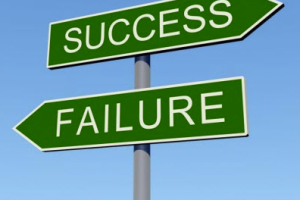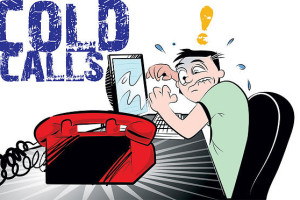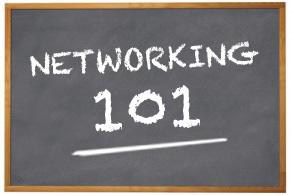When you live in breath the life of a complex sales, it’s so (unfortunately) easy to play the ‘what if game’… always contemplating if you’re rubbing the prospect the wrong way that he or she will flip the switch and ruin the deal.
I’m here to break it to you that not only is being persistent HELPING push the deal closer to the finish, but that it will ALWAYS (unless you’re a jerk about it) demonstrate respect, which in turn also pushes the deal closer to the moment of excitement when you have a signed contract in hand.
If you haven’t caught my drift, one of the most distinguishing qualities of great salespeople is their persistence. Let’s repeat that…. one of the most distinguishing qualities of great salespeople is their persistence. GREAT salespeople are reluctant to accept rejection and undaunted by resistance. They, we, you expect, even thrive, on handling challenges to an easy sale. We believe so firmly in the value of our offerings that we simply can’t let a deal go until we are absolutely sure it has no future.
Unfortunately however, it seems that every new (ish) salesperson I mentor is of the belief that persistence is annoying, amateurish, and will ruin your golden meal ticket. I guess for some reason the concept now carries a lot of unnecessary baggage—enough that it’s probably a good idea for us to revisit what it means (and what it does not mean) to give each and every potential customer our very best shot at their business.
Persistence is a virtue.
Many of us assume (incorrectly) that by being persistent will annoy our customers and drive them away, but that’s simply not true. I’m of the mindset that sporadic, haphazard contacts communicate a lack of commitment. Persistent salespeople who follow up in a professional, respectful manner communicate reliability and genuine interest. Appropriately cultivated, then, persistence is a virtue, not a vice. But like so many things, it’s all a matter of perspective and approach.
Persistent people are helpful and courteous, not pushy or rude. They have clear goals in mind for their conversations, and those goals revolve around understanding their customers’ needs, not making a sale at any cost. But persistent people are also reluctant to walk away from a compelling opportunity until they’ve given it their best shot, and they are tirelessly optimistic about what will happen if they try again one more time.
Let’s take it a step further. Persistent people live by the motto, “If at first you don’t succeed, then try again (with a different approach).” Or, to borrow one of veteran entrepreneur Mark Suster’s observations, they know how to be humble and “cheeky” at the same time—to avoid being arrogant while still having the courage to push the envelope.
Customers will not only appreciate the efforts, but they will generally respect a salesperson who follows up with them in a predictable manner—someone determined to secure what could very well be a mutually beneficial business relationship, someone who leaves them intrigued, even if they’re not ready to act right now.
On the other hand, customers resent oblivious salespeople who won’t respect their boundaries and who lack the discernment to recognize the difference between a subtle “try again later” cue and a clear “no, this is never going to happen, so please leave me alone” message.
Persistence is the result of discipline, not stubbornness.
There is a huge difference between discipline and stubbornness. Discipline is making a concerted effort to reach a specific goal. Stubbornness is hardheadedly repeating the same ill-fated approach to every situation. A disciplined person knows how to circumvent obstacles, but a stubborn person hopes only to plow through them. A disciplined person has the tenacity to overcome objections, but a stubborn person simply can’t take no for an answer. It’s not difficult to imagine how customers respond to each.
There’s actually a quick test to determine if you’re being persistent or a nuisance.
Just ask yourself this, ‘Do I have something valuable to share’? If you have an agenda, you are being persistent. If you are meandering, wandering, searching for something to latch onto, you are being a nuisance.
And believe me, customer can tell the difference.
Let that sink in the next time you call to ‘ask for a status update’.
Now you may be saying to yourself, ‘I know I have to provide value, but how can I possibly stay in touch without acting like a stalker’?
Fear not wise one because you have options (many of them). And while this is certainly by no means an exact science, the one constant remains true: Repeated phone calls with generic “touching base” inquiries tend to communicate only self-interest.
This is why I take a varied approach with clear and reasonable goals for each and every touch-point. Since it is vanishingly rare for a customer to be ready to buy on the first call, the goal at first contact is not to sell, but to secure permission for a follow-up. In the meantime, it would serve you well to send a targeted email or printed brochure rife with information (depending on the industry) so that when you follow up—on time as you said you would—there is a natural opener: “Thanks again for taking the time to talk with me last week. Have you had a chance to review any of the information I sent you?”
Now let’s be real, you shouldn’t expect an affirmative response here, but that’s okay. It’s still a good time to ask for permission to take the next step: “I sense that we might have an opportunity to help you out. Would you be willing to schedule fifteen minutes to talk next week, after you’ve had a chance to take a look at some of the material?” Even if the client declines, DON’T BE FAZED; its within your persistent right to send an email a few days later, perhaps forwarding along some information about a particular industry issue that’s relevant to the prospect’s business, following up the next week with yet another phone call.
If the prospect is still distant, it might be wise to say something like, “I understand that you must have many competing priorities, and if this isn’t a priority now, I respect that. Would it be okay if I subscribe you to our biweekly newsletter and check in again in a month or so?” And so on.
If, after these efforts, the prospect is still giving us the cold shoulder, then it might be time to call a bluff—if there is one—or else divert resources elsewhere.
Fun Fact: The “break up” email or “let’s talk further” email comes after the fourth reach-out attempt. Prospects are busy and they often do want to talk to you but they were relying on you, like every other salesperson, to keep trying to get in front of them.
Persistence is a competitive advantage.
The statistics back it up: persistent salespeople are the ones consistently winning deals. Better than 80% of all non-routine sales are made after five or more attempts, yet 90% of all salespeople give up by the fourth try.
Let’s stop and think about that for a moment.
If these numbers are correct, then the overwhelming majority of our prospective customers are only going to make a purchase decision well after the point when our customary sales conditioning begins telling us to stop wasting our time and to move on. In our eagerness to pursue new prospects before competitors can reach them, we ironically make it easier for our competitors to come in and finish what we started.
It’s not difficult to understand why this might be. Decision-makers are just as busy as we are, and they have a lot more to think about than just whether or not it makes sense to do business with us.
Persistent salespeople, therefore, recognize that what matters most is staying in the fore of a prospect’s mind from start to finish. After two or three short phone calls and at least one unanswered email, we assume that a prospect is simply not interested. And maybe they’re not—at least not right now. But if you stop now, there is a good chance that your customer will forget about you and your particular solution when she is ready to move forward.
Your goal is to keep your name in the prospect’s mind and develop a ‘stay-in-touch’ campaign.” The last thing we want to do is plant a seed of interest only to let a competitor come in and reap the harvest later, after we’ve moved on to other opportunities.
Word of caution when being persistent: Not every sales effort needs to be full on, hardcore sales pitching.
Actually, just the opposite is probably true: the best kinds of persistence are aimed not at pitching our products but at staying in touch with a prospect’s genuine needs.
We’ve all heard the saying; “people do business with people they like”. As such, the more you know about your prospects, the more common ground you’ll discover, and the easier it will become to develop relationships. As we make regular attempts to reach out to our customers, we learn more and more about the internal dynamics that make their organizations work, and this will give us an edge over our competitors who are reaching out to them for the first or second time.
As long as we’re respectful, even the briefest of touch-points can provide an opportunity for delivering new value and developing meaningful relationships with key people who won’t forget about us when solving a particular problem becomes a priority.
To be clear, we don’t mean to suggest that there is never a time when it’s wise to just cut our losses and divert resources to other opportunities. Industry experience and thought-leadership will help us develop a good feel for where to draw that line.
Nevertheless, what we do want to communicate is that persistence is neither easy nor intuitive. It requires us to unlearn some of our social conditioning in order to succeed where others fail. But it’s worth it. As travel entrepreneur Nusair Bawla makes crystal clear, “The more difficult a client is to get, the harder they are to lose, because stealing these kinds of clients requires persistence and discipline. 90 percent of all salespeople don’t have that.”
So let’s be persistent. It really does pay off.


